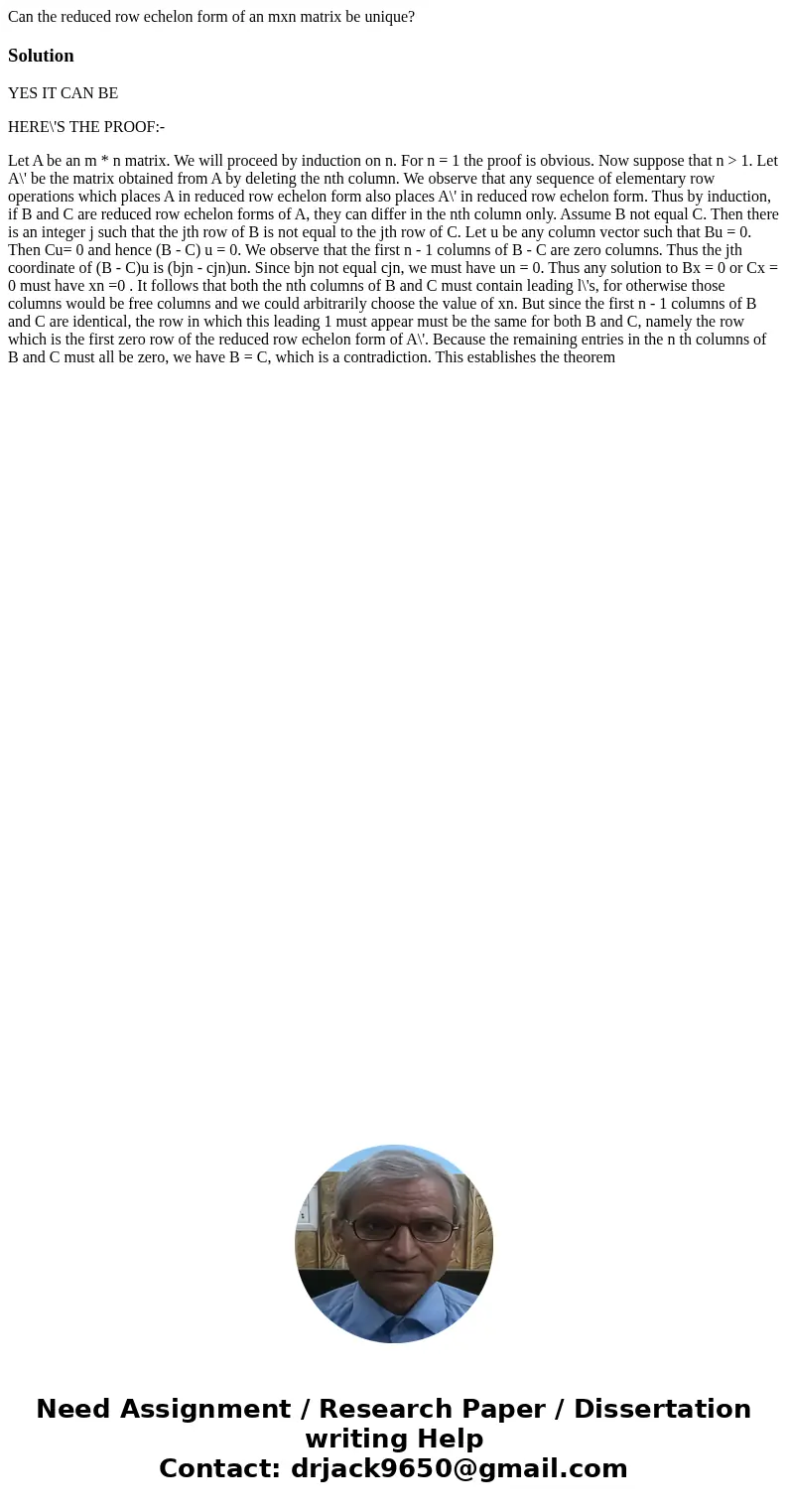Can the reduced row echelon form of an mxn matrix be uniqueS
Can the reduced row echelon form of an mxn matrix be unique?
Solution
YES IT CAN BE
HERE\'S THE PROOF:-
Let A be an m * n matrix. We will proceed by induction on n. For n = 1 the proof is obvious. Now suppose that n > 1. Let A\' be the matrix obtained from A by deleting the nth column. We observe that any sequence of elementary row operations which places A in reduced row echelon form also places A\' in reduced row echelon form. Thus by induction, if B and C are reduced row echelon forms of A, they can differ in the nth column only. Assume B not equal C. Then there is an integer j such that the jth row of B is not equal to the jth row of C. Let u be any column vector such that Bu = 0. Then Cu= 0 and hence (B - C) u = 0. We observe that the first n - 1 columns of B - C are zero columns. Thus the jth coordinate of (B - C)u is (bjn - cjn)un. Since bjn not equal cjn, we must have un = 0. Thus any solution to Bx = 0 or Cx = 0 must have xn =0 . It follows that both the nth columns of B and C must contain leading l\'s, for otherwise those columns would be free columns and we could arbitrarily choose the value of xn. But since the first n - 1 columns of B and C are identical, the row in which this leading 1 must appear must be the same for both B and C, namely the row which is the first zero row of the reduced row echelon form of A\'. Because the remaining entries in the n th columns of B and C must all be zero, we have B = C, which is a contradiction. This establishes the theorem

 Homework Sourse
Homework Sourse